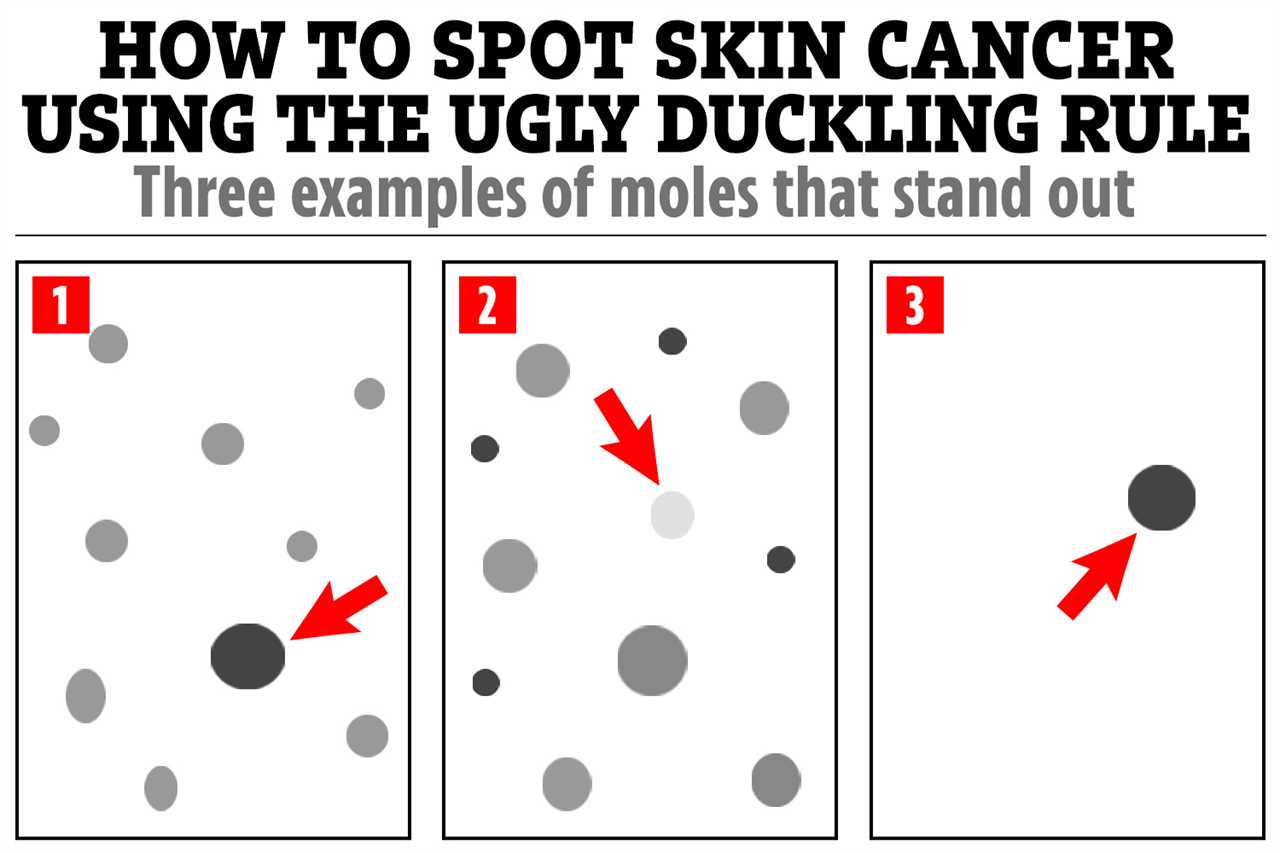
A Simple Check for Unusual-Looking Moles and Spots
Experts say that one of the easiest ways to spot skin cancer is by using the "ugly duckling rule." This simple check allows you to identify moles, spots, and growths that look different from others around them, which are key warning signs of melanoma. Essentially, if a mole stands out or looks different from its neighbors, it is important to get it looked at by a doctor.
The Skin Cancer Foundation explains that most normal moles on your body resemble one another, while melanomas stand out like ugly ducklings in comparison. This recognition strategy emphasizes that it's essential not just to check for irregularities, but also to compare any suspicious spot to surrounding moles to determine whether it looks different. These "ugly duckling" lesions can be larger, smaller, lighter, or darker than surrounding moles.
Using the ABDCE Checklist
A handy way to remember what to look for is the ABDCE checklist:
- Asymmetry: Most melanomas are uneven or irregular in shape.
- Border: The edges around a melanoma are likely to be uneven, irregular, or jagged.
- Colour: Melanomas usually have more than one colour, such as brown mixed with black, red, pink, white, or a blue tint.
- Diameter: Melanomas tend to be more than 6mm wide.
- Evolving: Look for changes in the size, shape, or colour of a mole.
If you notice any of these changes or other unusual marks on the skin that last for more than a few weeks, a mole that tingles or itches, one that crusts or bleeds, or something growing under a nail, it is important to visit your GP straight away. The earlier you notice that something might be wrong, the better the outcome in the long run.
Skin Cancer in the UK
There are two main types of skin cancer: non-melanoma, which develops in the upper layers of the skin, and melanoma, which develops from a mole. Around 85% of melanomas are caused by too much ultraviolet radiation, including time spent in the sun.
The number of people in the UK being diagnosed with skin cancer has hit a record high, with a sharp rise among those over 55 years old. Cancer Research UK reports 17,500 melanoma cases per year, which could surge another 50% to 26,500 annual cases by 2040. The rise has been described as "alarming" by the charity's chief executive, Michelle Mitchell, who urges people to take extra care in the sun. It's important to remember that 86% of these skin cancers could be prevented.
Heatwave Conditions and Staying Safe
Temperatures in some parts of Britain are expected to reach 32°C this week, with large areas of the South meeting official heatwave criteria (when locations record at least three consecutive days with daily maximum temperatures meeting or exceeding local thresholds). The UK Health Security Agency (UKHSA) has issued a yellow heat health alert, warning of increased pressure on healthcare services, increased risk of death for vulnerable people, and very warm indoor and outdoor environments.
To stay safe during hot weather, the NHS recommends:
- Staying out of the heat if you can
- Remaining in the shade between 11am and 3pm if you have to go outside
- Always wearing sunscreen with an SPF rating of at least 30, a hat, and light clothes
- Avoiding exercise or activity that makes you hotter
- Having cold food and drinks
- Avoiding alcohol, caffeine, and hot drinks
- Having a cool shower or putting cool water on your skin or clothes
- Keeping your living space cool by closing windows during the day and opening them at night when the temperature has dropped outside
Did you miss our previous article...
https://trendinginthenews.com/cancer/dont-ignore-the-signs-a-misdiagnosis-led-to-a-terrifying-diagnosis






